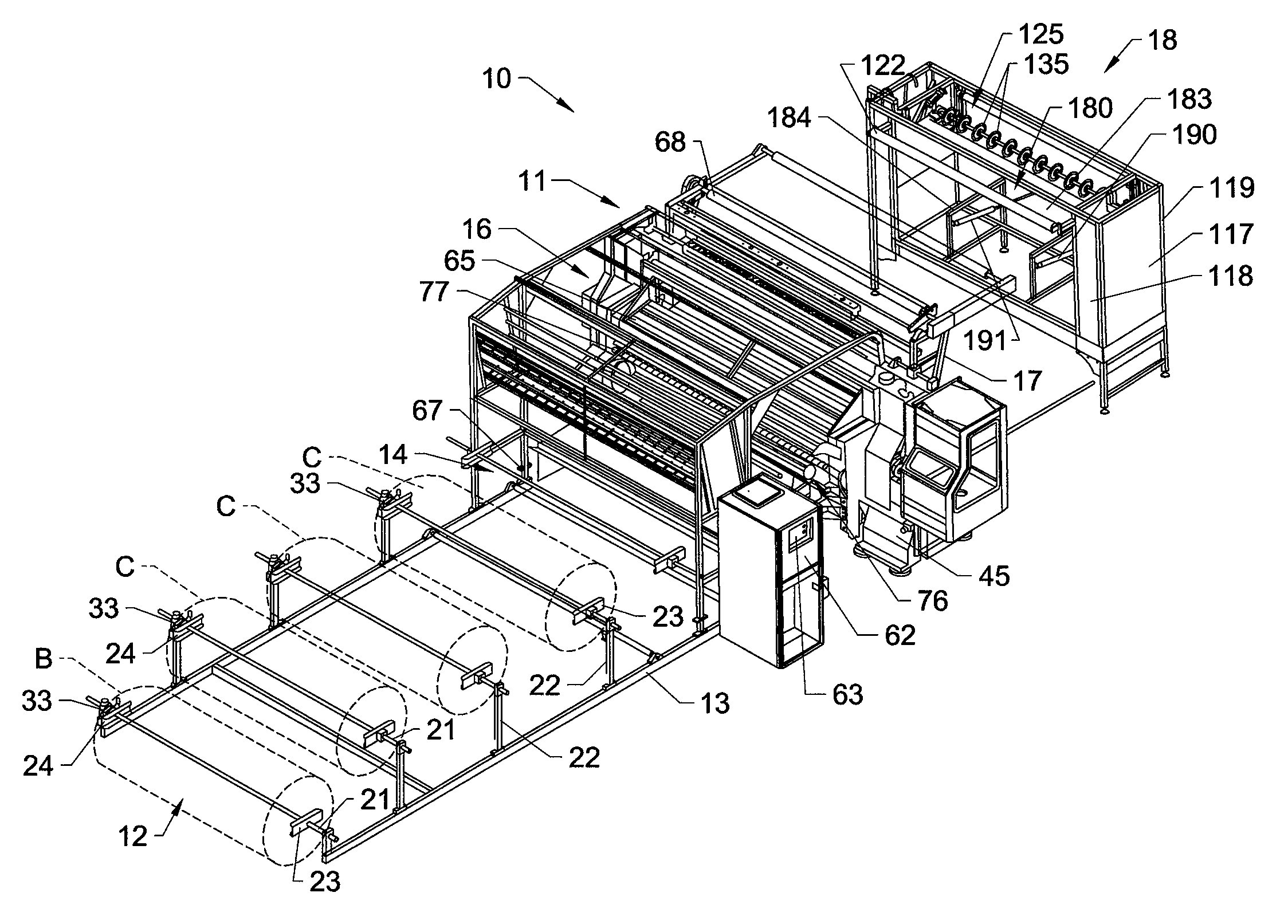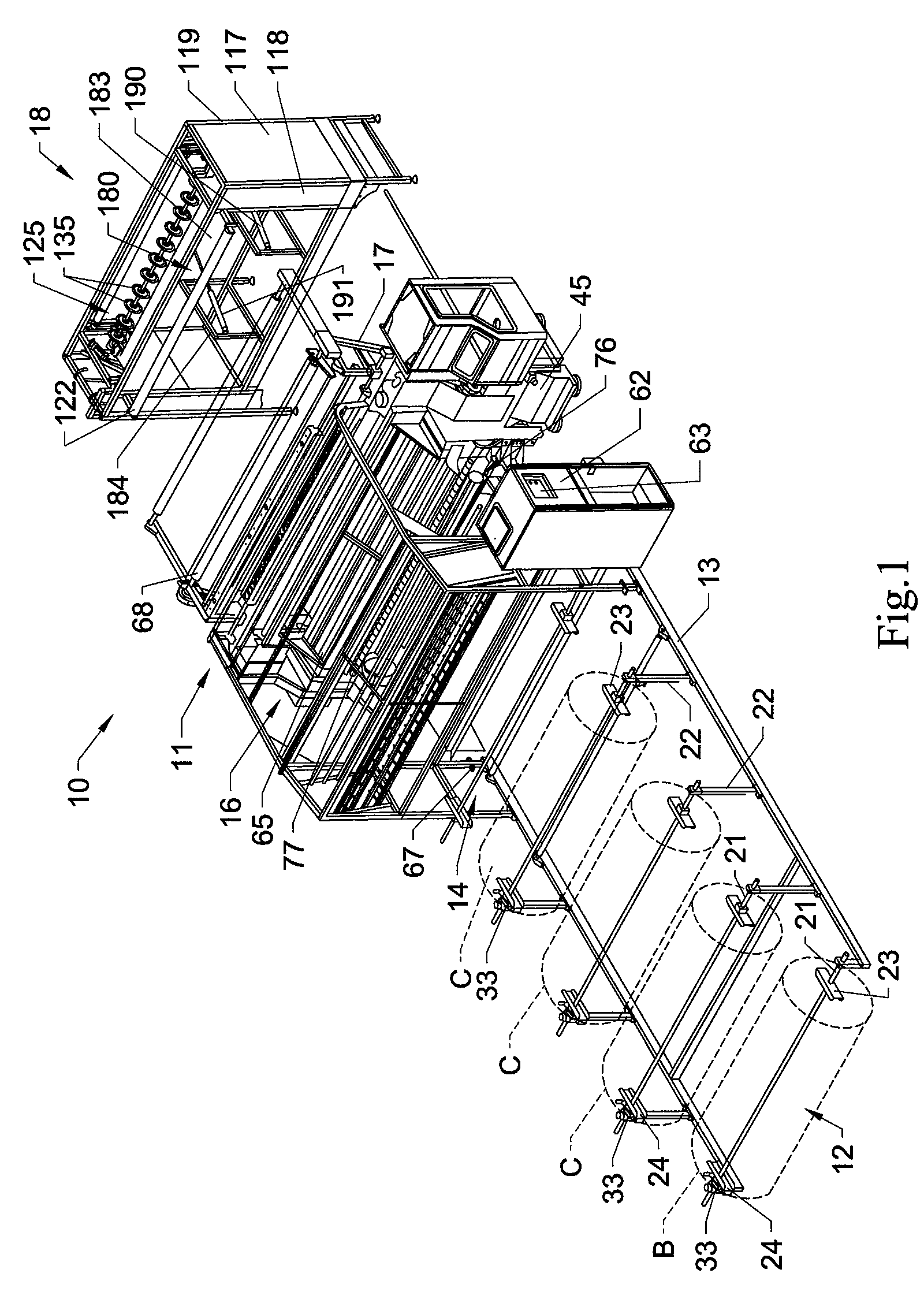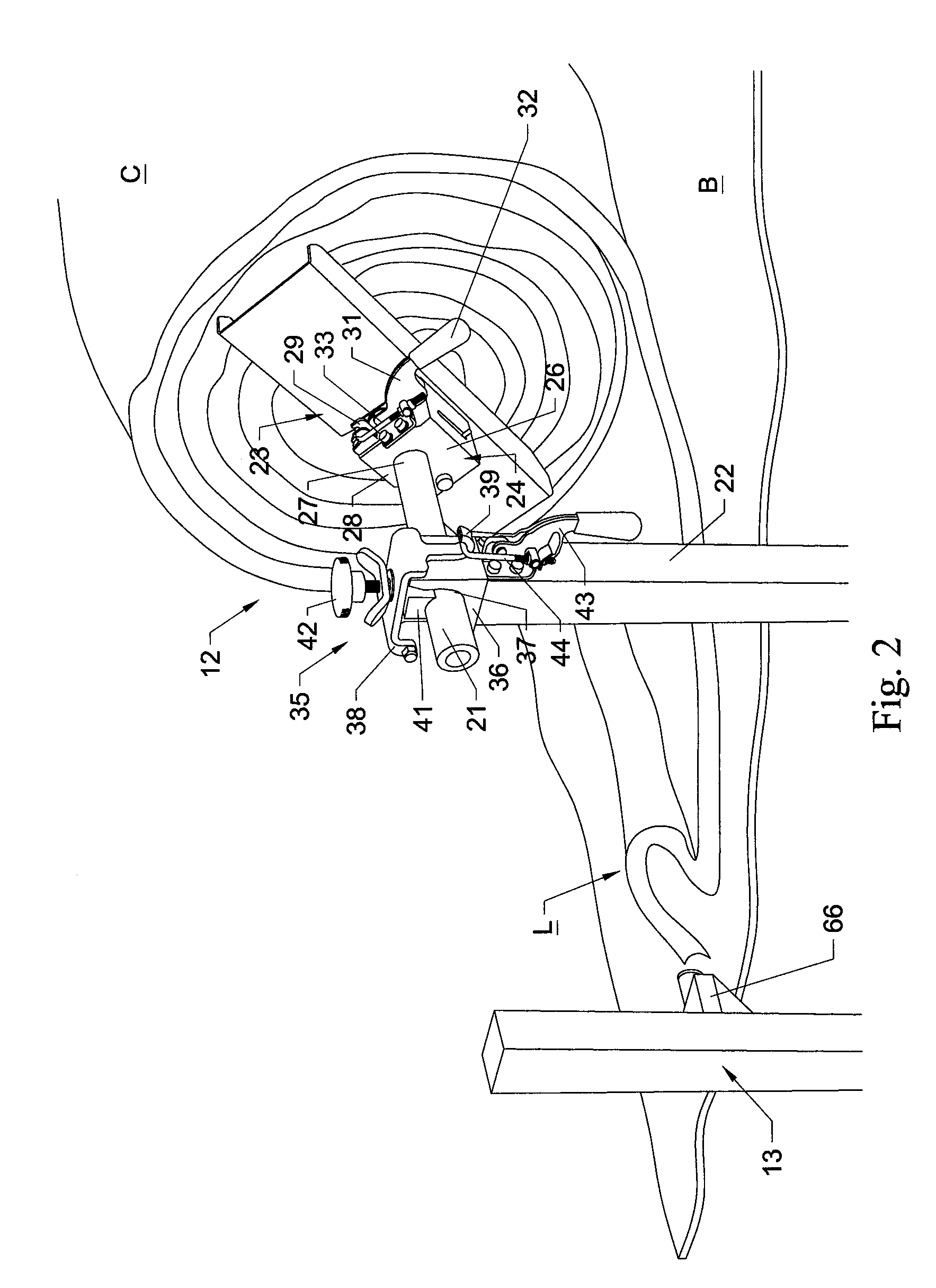Panel quilting machine
a panel quilting machine and quilting machine technology, applied in the field of quilting of fabric materials, can solve the problems of reducing the amount of stretch, limiting the operation of the quilter, and reducing the amount of tension applied, so as to reduce the amount of stretch and reduce the tension
- Summary
- Abstract
- Description
- Claims
- Application Information
AI Technical Summary
Benefits of technology
Problems solved by technology
Method used
Image
Examples
Embodiment Construction
[0024]The present invention generally is directed to an improved system 10 and method of quilting fabric textile materials, typically for use as mattress panels, borders, gussets and other components for mattresses and foundation sets. The quilting system 10 of the present invention and various inventive features thereof, are shown in FIGS. 1-5B of the drawings.
[0025]As generally indicated in FIG. 1, the quilting system 10 of the present invention will including a quilting machine or quilter unit 11 that receives a series of plies or layers of woven and non-woven fabric or other textile backing materials B, which can include one or more upper and lower plies of an outer facing fabric material, with a foam fill or similar cushioning material layer C being received therebetween. The backing and cushioning materials will be fed from a series of supply rolls 12, typically mounted on a rack 13 positioned upstream from an input or first side 14 of the quilting machine, with the backing an...
PUM
 Login to View More
Login to View More Abstract
Description
Claims
Application Information
 Login to View More
Login to View More - R&D
- Intellectual Property
- Life Sciences
- Materials
- Tech Scout
- Unparalleled Data Quality
- Higher Quality Content
- 60% Fewer Hallucinations
Browse by: Latest US Patents, China's latest patents, Technical Efficacy Thesaurus, Application Domain, Technology Topic, Popular Technical Reports.
© 2025 PatSnap. All rights reserved.Legal|Privacy policy|Modern Slavery Act Transparency Statement|Sitemap|About US| Contact US: help@patsnap.com



